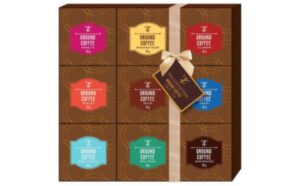By Elaine Viets
When I started writing Sex and Death on the Beach, the first mystery in my new Florida Beach series, I wrestled with a problem I hadn’t had for some time: Creating characters.

All my mysteries have new characters, but when I’m introducing a new series, I have to create characters I can use throughout the series. This took at least five rewrites.
My main character is Norah McCarthy, who inherited a 1920s apartment house in mythical Peerless Point, Florida. Norah was orphaned as a little girl and brought up by her grandmother, a Florodora Girl. She was a showgirl.

Version 1.0.0
The residents of Norah’s building belong to an exclusive group. They must be Florida Men and Women, but the benign variety. The exploits of Florida Man often include alligators and alcohol. You’ve seen the headlines: “Florida Man Busted with Meth, Guns and Baby Gator in Truck.” The residents are her adopted family, and they will appear in future mysteries.
Bare bones characters:
Some characters will probably only appear once, in Sex and Death on the Beach. Like Elwin Sanford.
Elwin is “a rotund man in a hardhat, neon safety vest and gray coveralls. He had a wispy mouse-colored mustache and weedy patches of hair clinging to his sweaty scalp. In fact, with his round body, gray coveralls and twitchy nose, he looked like a cartoon mouse.”

Elwin’s appearance is a clue to his character. He, a city inspector, is a crook and looks like one.
Important supporting characters.
Norah McCarthy has two live-in staff members at the Florodora apartments. One is the handyman-gardener is Rafael, a native of Colombia. In the first rewrite, Rafael is “a dark, stocky man who knows inventive ways to repair ancient machinery, handles maintenance and takes care of the grounds. He keeps the building one step ahead of the city inspectors, who are determined to shut us down. Rafael has a bachelor apartment above the garage.”
Rafael ducks difficult questions by looking confused and saying, “No spik Engleesh.”
At that point, was Rafael a real character?
Not yet. All I have are the bare bones. Rafael is simply someone who has a few quirky mannerisms.
For the third rewrite, I sat down and wrote a bio of every major supporting character. In that version, my main character Norah chided Rafael when he used his “No spik Engleesh” routine with a cop. Norah tells him:
“Eventually you’re going to get caught, Rafael. You speak excellent English. You were a judge in Colombia.”
Norah instantly regrets her thoughtless remark: “As soon as the words passed my lips I wished I could take them back.
“The sudden sadness in Rafael’s eyes was a terrible rebuke. Rafael fled Medellin in 1986, after Pablo Escobar killed his wife and baby son. Grandma hired him, and he’d worked at the Florodora ever since. His ambition died with his family.”
Late at night, Norah would often see Rafael sitting on the flat roof of his garage apartment staring at the ocean, as if he could see all the way to his troubled country.
“Rafael never discussed his family’s murders. He hid his heartbreak with superficial jokes and his ‘no-spik-Engleesh’ routine.”

I also wrote this bio of Rafael’s red truck: “The old truck rattled and lurched. A loose spring in the seatback poked passengers every time Rafael hit the brakes.
“The air conditioning worked when it felt like it. Whenever the air-con quit, Rafael would give the dashboard a hearty whap and cool air would pour out again.”

The Florodora has five permanent residents. I’m partial to Billie the banana bandit. Billie held up a convenience store with a banana and stole three overdone dogs from its hot dog roller grill. Billie worries his crime will somehow come to light, even though there was no police report and he ate the evidence.
At first, that’s about all I said about Billie, except he was a movie buff who perpetually held his own personal filmfest.
Billie needed more depth, so I had him write retrospectives about movies and made his first book a New York Times bestseller.
Billie had “turned his obsession into a successful writing career.”
He was currently researching his new film “book, Seeing in the Dark. This week it was the Rocky movies, and Billie was looking for the thirty-five goofs and plot holes that were supposedly in the Sly Stallone boxing movies. That’s how he prepared for his work, by looking for the mistakes in the movies.”
Billie comes downstairs, “wearing baggy jeans and a red Bruce Willis T-shirt that read, “I survived the Nakatomi Plaza Christmas party 1988.”
Nakatomi Plaza. The setting for Die Hard.
 Norah tell him, “Let me guess. You’re also doing a Die Hard retrospective for your new book.”
Norah tell him, “Let me guess. You’re also doing a Die Hard retrospective for your new book.”
“Yep,” Billie said. “Did you see the first Die Hard movie?’
“It’s been a while, but I liked it.”
“Me, too,” Billie said. “But there are supposed to be more than a hundred mistakes in the first movie alone, and I’m trying to find them all.”
Billie will tell Norah about as many as possible.
Another favorite character in Sex and Death on the Beach is Mickey, the artist. At first, I described Mickey as single, “kind and gentle,” and wearing offbeat clothes, including “a funky orange-striped caftan.”
Boring. Mickey had to be more than a heap of clothes. Readers had to care about her.
So I added, she “works as a freelance artist, but she’s been known to vandalize for a good cause.
“When posters appeared on the local telephone poles insulting black people, Mickey was horrified. She went around Peerless Point, covering the offensive posters with her homemade one, which said, ‘I covered the ugly racist poster here with a cat photo.’
“My favorite prank was what Mickey did in the local gas station bathroom. In the restroom was a wall-mounted infant diaper changing station that pulled down into a changing bed. Mickey put a sign on the plastic baby bed that said, ‘Place sacrifice here.’”

Mickey drives a “powder blue VW Bug with a sign in the back window: ‘Adults on Board. We want to live, too.’”
For this series, I recorded how all my characters got around. Some took the bus or bummed rides, others drove.
The Florida Beach bios total 22 pages single-spaced, and describe buildings, apartments, cars and characters minor and major, first and last names. I hope you’ll enjoy them.
Writers, do you use character bios for your books?

Buy Sex and Death at the Beach online. NOTE: Prices may vary. Please check before you buy:
Amazon: https://tinyurl.com/326up5ny
Barnes & Noble: https://tinyurl.com/3tx8x4fb
Thriftbooks https://tinyurl.com/3vk9yhb5.
Or order it from your local bookstores, including Harvard Book Store https://www.harvard.com/book/9781448314799.



















 By Elaine Viets
By Elaine Viets







 By Elaine Viets
By Elaine Viets (2) Elaine: I walked over to him and looked right into his red eyes. We were both the same height.
(2) Elaine: I walked over to him and looked right into his red eyes. We were both the same height. (3) Elaine: The cut on her forehead had been stitched. She’d have a heck of a bruise there tomorrow.
(3) Elaine: The cut on her forehead had been stitched. She’d have a heck of a bruise there tomorrow.
 (6) Elaine: I fired up my iPad and opened up the Death Scene Investigation form.
(6) Elaine: I fired up my iPad and opened up the Death Scene Investigation form.






 By Elaine Viets
By Elaine Viets







 Norah tell him, “Let me guess. You’re also doing a Die Hard retrospective for your new book.”
Norah tell him, “Let me guess. You’re also doing a Die Hard retrospective for your new book.”



